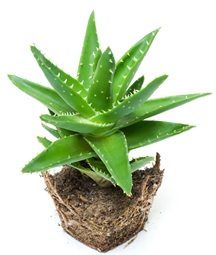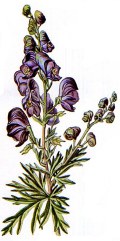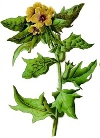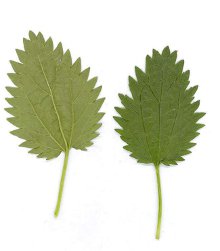Your first aid kit and equipment should all be kept together in something like a duffel bag so that you can grab it on the go. Inside the duffel bag you should keep a smaller bag that can be quickly filled with the first aid kit and any specific equipment you might need to transport, such as towels or a splint, because there may be times when you don’t want to take the whole duffel bag. The first aid kit, itself, ought to be waterproof, durable, easy to open, and easy to transport. Everything should be clearly labeled.
Here is a quick list of items you should have in your first aid kit, with descriptions below.
| Aloe vera gel Activated charcoal Ipecac Powdered clay Saline water Tweezers Eye wash Povidone-iodine Homeopathics |
Rolled gauze Large bandages Cotton balls Paper tape Nail clippers Eye dropper Rectal thermometer Spherical ear syringe Bottled water |
Activated Charcoal
Activated charcoal, also called activated carbon, is a highly porous material that absorbs poisonous substances through the stomach and intestinal tract. In most cases where a dog or cat has ingested poisons, it is the treatment of choice.
In most cases where a dog or cat has ingested poisons, it is the treatment of choice.
If your activated charcoal is in powder form, mix it with water to make a slurry. The recommended dose is one to three grams of charcoal per pound of body weight. Some veterinarians recommend higher dosages than this, but here’s a rough guide:
| Under 25 lbs | 1 teaspoon |
| Over 25 lbs | 2 teaspoons |
There may be times when you ought to induce vomiting first. To do this, give two to three teaspoons of Ipecac, depending on your pet’s size. Give this treatment only once, and then follow with activated charcoal. Do not induce vomiting if your pet:
- swallowed a cleaning product containing acids or alkalis. They can severely burn throat tissue when thrown up.
- swallowed a petroleum-based product. These types of cleaners exude fumes that can cause pneumonia if inhaled.
- is groggy or confused.
If any of the above conditions exist, go straight for the activated charcoal and see an emergency veterinarian as soon as possible.

Aloe Vera Gel
Aloe forms a protective barrier which helps retain moisture and promotes healing. It provides relief from sunburn, minor burns, certain types of skin irritations, insect bites, chafing, and dry skin.
Essential Oils
Essential oils will keep for as long as ten years if they are stored correctly. They ought to be kept in tightly sealed jars made of a dark-colored glass, such as amber, and stored away from heat and light. Diluted oils may be kept in plastic containers. Make sure you buy the essential oil. For example, if you buy lavender oil, make sure it is essential oil of lavender.
Tea Tree Oil
Tea tree oil is a powerful antiseptic, antiviral, antifungal, antibacterial, and all around germicide. With that said, please read the following precautions carefully.
First off, research has shown that a fifteen percent solution is as effective as the full strength essential oil. In her book, The Encyclopedia of Natural Pet Care, CJ Puotinen describes how to make the diluted solution:
- Two tablespoons tea tree oil
- Four tablespoons 80-proof vodka, vegetable glycerin, or sulfated castor oil
Stir these ingredients vigorously in a measuring cup and let stand for five minutes. If a film develops on the surface, add more liquid and shake again. When no oil floats to the surface, add any combination of aloe vera juice or gel, comfrey or calendula tea, or pure water until the meniscus reaches ¾ of a cup. Now the solution should be approximately fifteen percent tea tree oil.
Secondly, and more importantly, using tea tree oil on pets has become a subject of controversy. For years, tea tree oil (diluted) was often touted as a natural product to use for ringworm and other fungal infections. However, many people advise not to use tea tree and other essential oils on pets, particularly on cats. They say that tea tree oil isn’t metabolized in cats the same way as it is in people, and it can build up internally and become toxic.
This can be true of many topical and oral medicines, though. The amount of the dose determines whether a treatment is helpful or harmful, and that applies to all sorts of products from prescription drugs to herbal remedies. Any fat soluble product will build up in an animal’s system, and this includes humans. This is why you need to be careful with vitamins A, D, E and K.
One of the reasons essential oils such as tea tree can be dangerous to pets is that the animal will lick the treated area. If possible, apply a bandage after you apply any topical treatment. Gauze pads, rolled gauze and paper tape are good tools for this task.
Lavender Oil
 Lavender oil is an analgesic, antiseptic, anticonvulsive, and antirheumatic that has many medicinal uses. Essential oil of lavender is used for pain, infections, burns, and circulation. It’s also an insect and worm repellent. As with other essential oils, talk with your holistic veterinarian about them and do some research. Some experts swear by them, other people say they aren’t safe. Just remember that almost all prescription treatments aren’t safe when overused, and some prescriptions aren’t safe even in their prescribed amounts. If you use lavender oil in an educated way, it can be a versatile and helpful product.
Lavender oil is an analgesic, antiseptic, anticonvulsive, and antirheumatic that has many medicinal uses. Essential oil of lavender is used for pain, infections, burns, and circulation. It’s also an insect and worm repellent. As with other essential oils, talk with your holistic veterinarian about them and do some research. Some experts swear by them, other people say they aren’t safe. Just remember that almost all prescription treatments aren’t safe when overused, and some prescriptions aren’t safe even in their prescribed amounts. If you use lavender oil in an educated way, it can be a versatile and helpful product.
Eye Wash
See Eye Washes and Drops in the Conjunctivitis section.
Homeopathic Medicines
- Aconitum nappellus 30c
Aconitum is useful in preventing shock and can be life-saving in an emergency when you are on your way to a veterinarian. Because of its shock-prevention properties, Aconitum is used in cases of collapse.
- Arnica montana 30c
Arnica is one of the most useful homeopathic remedies for dogs and cats. It is suitable in almost any injury, especially for blunt traumas that result in bruising. An animal that needs Arnica is usually in great pain and does not want to be touched. The animal is also restless and does not seem to be able to find a comfortable place to lie down. This remedy may also help with older pets who have chronic injuries or have over-exercised.
- Arsenicum album 30c
Arsenica is useful for animals with many acute conditions but mainly for diarrhea and vomiting. Animals needing this remedy have symptoms that are rather specific and constant. These include restlessness, weakness, chilliness, and aggravation after midnight. This remedy is extremely useful for toxic conditions, whether the toxin is from a drug or vaccine, food poisoning, or a buildup of toxins from kidney or liver disease.
- Belladonna 30c
Belladonna has many uses in homeopathy for dogs and cats, and is also the root ingredient in some medications commonly used in people. It’s good to have in your first aid-kit for acute seizures, heatstroke, and high fever. Chronic conditions that may be improved with Belladonna include epilepsy, aggressive behavior, rabies, and heated inflammation. Don’t use for chronic conditions, though, without the guidance of a homeopathic veterinarian.
- Carbo vegetabilis 30c
This remedy is called the “corpse reviver” for its use in traumatic shock, blood poisoning, and acute asthmatic situations. Indications include collapse, coldness, extreme weakness, gasping for air, mental and physical inactivity, lack of circulation and bluish skin and gums.
- Glonoine 30c
Glonoine is helpful in cases of heatstroke.
 Ledum palustre 30c
Ledum palustre 30c
Ledum is the first choice for any puncture wound. Animals needing this remedy are usually angry and irritable, and they prefer to be left alone. This remedy is good for insect bites and stings, snake bites, flea bites, and puncture injuries to the eyes and other parts of the body.
- Nux vomica 30c
Nux is very often used to combat negative reactions from medication, or its overuse, or from poor foods. Pets who need Nux are irritable and sensitive to cold, noise, light, or smells. This remedy can treat vomiting that is often followed by retching. It can also treat diarrhea or constipation. Nux can be life supporting if your dog has ingested a toxic substance, and can be given immediately to your dog on your way to the vet.
- Ruta graveolens 30c
Homeopaths generally prescribe ruta for treating sprains and strains, cartilage and tendon damages caused in the region of the joints, damage of the tissues covering the bones, and sciatica. Ruta is also frequently used to provide relief from the pain and stiffness in the hands, legs, wrists and feet.
 Urtica urens tincture
Urtica urens tincture
The most common use for Urtica urens is internally to help the urinary tract break up crystals. The reason we include this in our first-aid list is because it also works topically on minor burns, insect bites and stings, and some rashes. You must use the mother tincture form.
Ipecac
Syrup of ipecac is an age-old treatment used to induce vomiting when your dog or cat has eaten something poisonous. Give about one teaspoon per ten pounds of body weight one time. Do not overdose, as too much ipecac cause heart problems. Afterward, follow with activated charcoal and see a veterinarian as soon as possible.
Do not induce vomiting if your pet:
- swallowed a cleaning product containing acids or alkalis. They can severely burn throat tissue when thrown up.
- swallowed a petroleum-based product. These types of cleaners exude fumes that can cause pneumonia if inhaled.
- is groggy or confused.
Povidone-iodine
Otherwise known as Betadine, povidone-iodine is the generic name for this broadly used antiseptic. It’s known as a microbicide because it fights microbes, such as bacteria. This first aid staple is used to prevent infection in minor cuts, scrapes, and burns.
Powdered Clay
Bentonite clay powder can be mixed with water and applied externally as a poultice on cuts, bruises, insect bites, bee stings, boils, rashes, acne, and burns. It can also be taken internally for diarrhea, and is one of the key ingredients in Kaopectate (the other is pectin). There are other types of clay powder that have the same effect.
Saline Water
Used for washing out eyes, ears, and anything. You can buy premade saline or make your own using either distilled water or filtered water that has been boiled and regular salt. Some people prefer to use natural sea salt. Cooking or pickling salt also works, as long as it is plain salt. To each quart of pure water, add one teaspoon of salt. We usually test the saline solution on our own eyes, but we can’t recommend you do that. The solution should be room temperature.